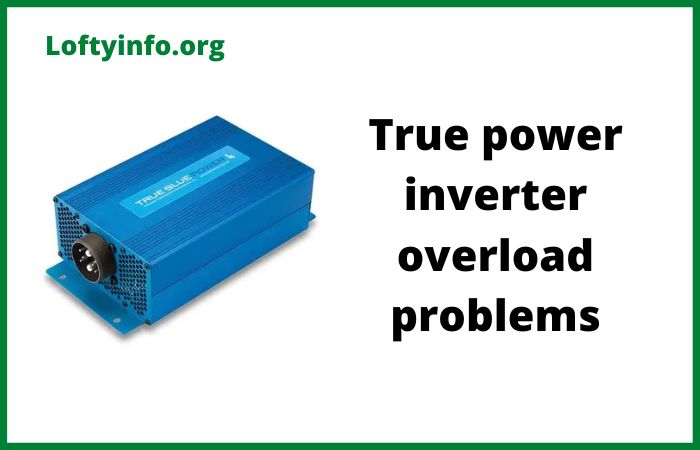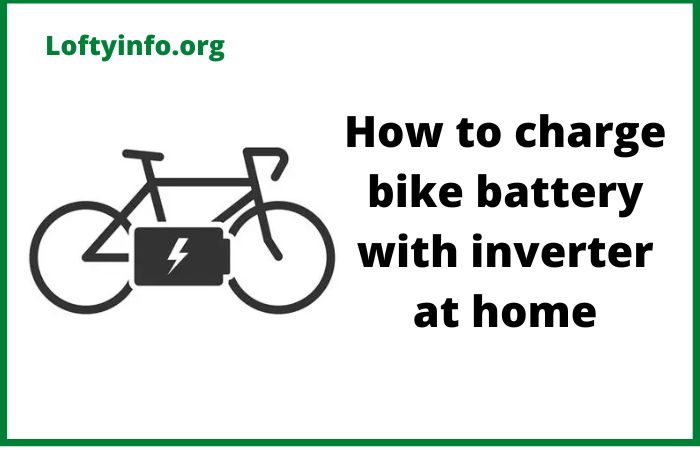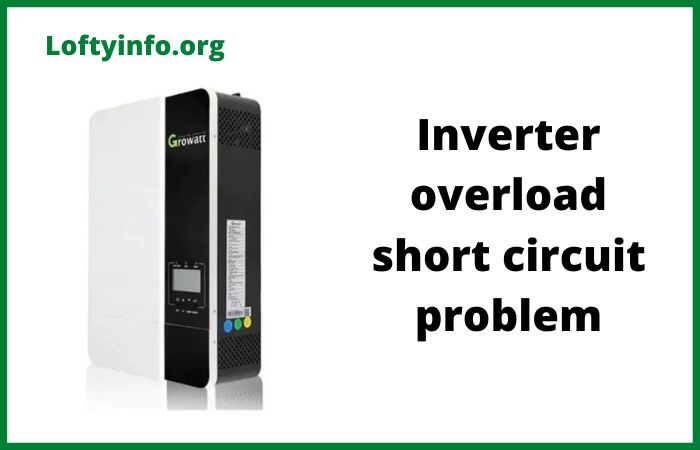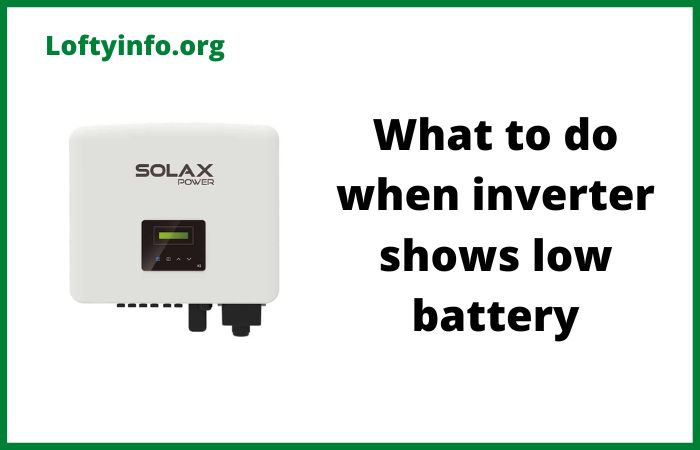Technical Specifications Of Low Frequency Inverters Explained
Low frequency inverters are robust power conversion devices that utilize heavy-duty transformers to convert DC power from batteries into AC power for household and commercial applications.
Understanding their technical specifications is crucial for proper selection, installation and operation.
This guide provides detailed explanations of key specifications categorized into capacity, input and output parameters of a low frequency inverter.
Technical Specifications Of Low Frequency Inverters
A) Inverter Capacity Specifications
In this section, we are going to explain the specifications that links to the capacity of the low frequency inverter.
1) Rated Power
Rated power represents the continuous power output that the inverter can deliver under normal operating conditions without overheating or damage.
This specification is typically expressed in watts (W) or kilowatts (kW) and indicates the maximum load the inverter can handle continuously.
For example, a 3000W rated inverter can continuously power devices that collectively consume up to 3000 watts.
This rating assumes standard operating conditions including proper ventilation, normal ambient temperature (usually 25°C) and adequate battery voltage.
The rated power directly determines what appliances and how many devices you can operate simultaneously.
2) Surge Power
Surge power also known as peak power represents the maximum power the inverter can deliver for short periods typically lasting from a few seconds to several minutes.
This specification is crucial because many electrical devices require significantly more power during startup than during normal operation.
Motors, compressors, pumps and other inductive loads often require 2-7 times their running power during startup.
A quality low frequency inverter might have a surge rating of 2-3 times its continuous rating. For instance, a 3000W continuous inverter might handle 6000W to 9000W surge loads.
The robust transformer design in low frequency inverters makes them particularly well suited for handling these high surge demands.
3) DC Input Type
The DC input voltage specification indicates the nominal battery voltage the inverter is designed to operate with.
Common configurations include 12V, 24V and 48V systems.
12V systems are typically used for smaller applications like RVs, boats and small residential setups.
They are simple to wire and components are widely available but they draw high currents for the same power output.
24V systems offer a good balance between simplicity and efficiency.
24 volts system is commonly used in medium sized residential and commercial applications.
48V systems are preferred for larger installations as they operate at lower currents for the same power thereby reducing cable losses and allowing for more efficient power transmission.
4) Efficiency
Efficiency measures how effectively the inverter converts DC power from batteries into usable AC power expressed as a percentage.
A typical low frequency inverter operates at 85-95% efficiency meaning that 85-95% of the input power is converted to useful output power while the remainder is lost as heat.
Efficiency varies with load conditions typically being highest at 50% to 80% of rated capacity and lower at very light or very heavy loads.
Higher efficiency translates to longer battery runtime, reduced heat generation and lower operating costs.
While low frequency inverters generally have slightly lower efficiency than high frequency units, their robust construction and superior surge handling capabilities often justify this trade-off.
5) Inverter Technology
All inverters do not use the same technology. Inverters are grouped into low frequency inverters and high frequency inverters.
Low frequency inverter technology utilizes a heavy-duty, iron core transformer operating at the output frequency (50Hz or 60Hz).
This design philosophy prioritizes reliability and surge handling capability over weight and size considerations.
The large transformer provides several advantages which include excellent surge power capability for starting motors and other high-inrush loads, superior overload tolerance, robust construction that withstands harsh environments and the ability to handle reactive loads effectively.
The transformer also provides galvanic isolation between input and output, enhancing safety and reducing electrical noise.
While this results in a heavier and more expensive unit compared to high frequency designs, the trade off delivers exceptional reliability and performance under demanding conditions.
B) Inverter Input Specifications
1) DC Input Voltage
DC input voltage specification defines the operating voltage range the inverter accepts from the battery system.
This is typically expressed as a nominal voltage with acceptable minimum and maximum limits.
For a 12V system, the inverter might operate from 10.5V to 15V automatically shutting down below the minimum to protect batteries from over discharge and above the maximum to prevent damage from overcharging.
The inverter continuously monitors input voltage and may reduce output power as voltage drops to maintain stable operation and extend battery life.
2) Maximum DC Input Current
Another important technical specification of a low frequency inverter is the maximum DC input current.
Maximum DC input current represents the highest current the inverter will draw from the battery system under full load conditions.
This specification is critical for proper system design including battery sizing, cable selection and fuse/breaker ratings.
Current draw is inversely related to input voltage and directly proportional to output power.
For example, a 3000W inverter operating at 90% efficiency on a 12V system would draw approximately 278 amps at full load (3000W ÷ 0.9 ÷ 12V = 278A).
Understanding maximum current draw ensures adequate battery capacity and prevents voltage sag that could affect performance.
3) AC Input Range
Many modern low frequency inverters include built in battery chargers and automatic transfer switches.
The AC input range specification defines the acceptable voltage and frequency limits for the incoming grid or generator power used to charge batteries and power loads directly.
Typical AC input ranges might be 90 VAC to 140VAC for 120V systems or 180VAC to 280VAC for 240V systems with frequency tolerance of ±3Hz.
When AC input is present and within acceptable limits, the inverter automatically switches to pass through mode powering loads directly from the grid while simultaneously charging batteries.
This feature provides seamless backup power capability and optimal battery management.
c) Inverter Output Specifications
1) DC Battery Charging Amps
For inverter chargers, the DC battery charging current specification indicates the maximum current available for battery charging when AC input power is present.
This is typically expressed in amperes and determines how quickly batteries can be recharged.
Charging current affects battery life and charging time.
Higher charging rates reduce charging time but may stress batteries if not properly managed.
Quality inverter chargers include multi-stage charging algorithms (bulk, absorption, float) that optimize charging current based on battery type, temperature and state of charge.
Typical charging rates range from 10-100+ amps depending on inverter size and design.
If you intend to charge the inverter batteries through the grid using the inverter, the output charging current will determine the least capacity of battery to use.
The ideal range is between 10% to 20% of the battery capacity.
This means that if the capacity of the battery is 200Ah, the inverter charging current should not exceed 40 amps which is 20% of 200Ah battery capacity.
2) AC Output Voltage
AC output voltage specification defines the voltage the inverter produces.
For residential applications, this is typically 120VAC in North America or 230VAC in many other regions matching local grid standards and appliances used.
The inverter maintains this voltage through internal regulation circuits that compensate for varying loads and input voltage fluctuations.
Accurate output voltage is essential for proper operation of connected devices and appliances which are designed to operate within specific voltage tolerances.
3) Output Voltage Regulation
Output voltage regulation measures how well the inverter maintains stable output voltage as load conditions change.
This specification is typically expressed as a percentage deviation from nominal voltage such as ±2% to ±5%.
Better voltage regulation ensures consistent performance of connected devices and prevents damage from voltage variations.
Low frequency inverters typically provide excellent voltage regulation due to their robust transformer design and sophisticated control circuits.
For example, ±2% regulation means the output voltage will remain within 118-122VAC for a 120VAC nominal system regardless of load changes within the inverter’s capacity.
4) Output Frequency
Output frequency specification defines the AC frequency the inverter produces typically 50Hz or 60Hz depending on regional standards.
Frequency accuracy and stability are crucial for proper operation of timing dependent devices like clocks, motors and some electronics.
Quality inverters maintain frequency accuracy within ±0.1Hz through crystal controlled oscillators and sophisticated control circuits.
Frequency stability is particularly important for inductive loads like motors which are sensitive to frequency variations that can affect their speed and efficiency.
5) Waveform
The output waveform specification describes the shape of the AC voltage the inverter produces.
Low frequency inverters typically generate either modified sine wave or pure sine wave output.
Pure sine wave output is identical to utility grid power, providing clean, distortion free electricity suitable for all types of loads including sensitive electronics, motors and medical equipment.
Modified sine wave is a stepped approximation of sine wave that works adequately with resistive loads and simple electronics but may cause issues with some motors, battery chargers and audio equipment.
The waveform specification often includes Total Harmonic Distortion (THD) ratings with pure sine wave inverters typically achieving less than 3% THD.
Lower THD means cleaner power that reduces heating in motors, eliminates humming in audio equipment and ensures proper operation of all connected devices.
Conclusion
Understanding these low frequency technical specifications enables informed decision making when selecting low frequency inverters for specific applications.
The robust design philosophy of low frequency inverters, centered around heavy duty transformers, delivers exceptional surge capability and reliability, making them ideal for demanding applications where performance and durability are paramount.
Proper specification analysis ensures optimal system performance, longevity and safety in both residential and commercial power applications.






